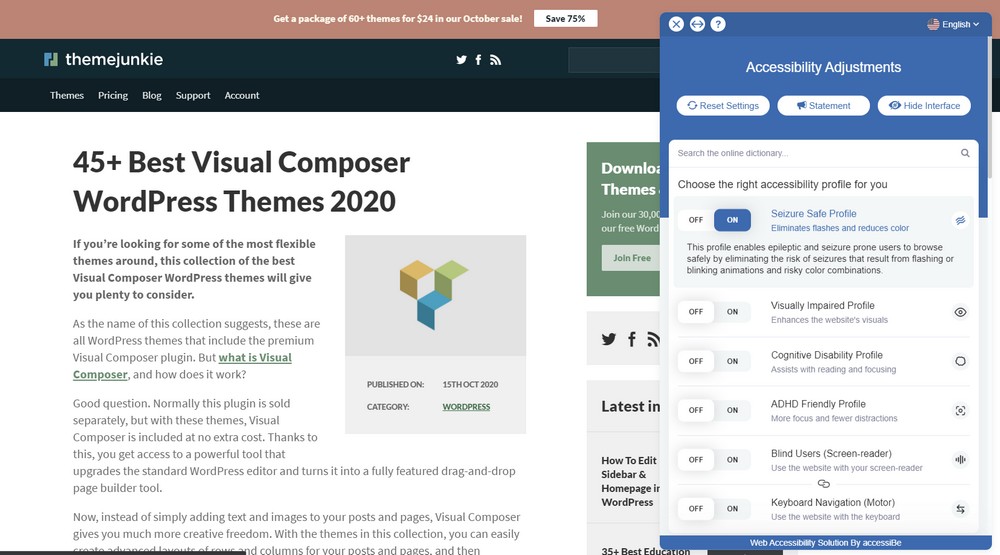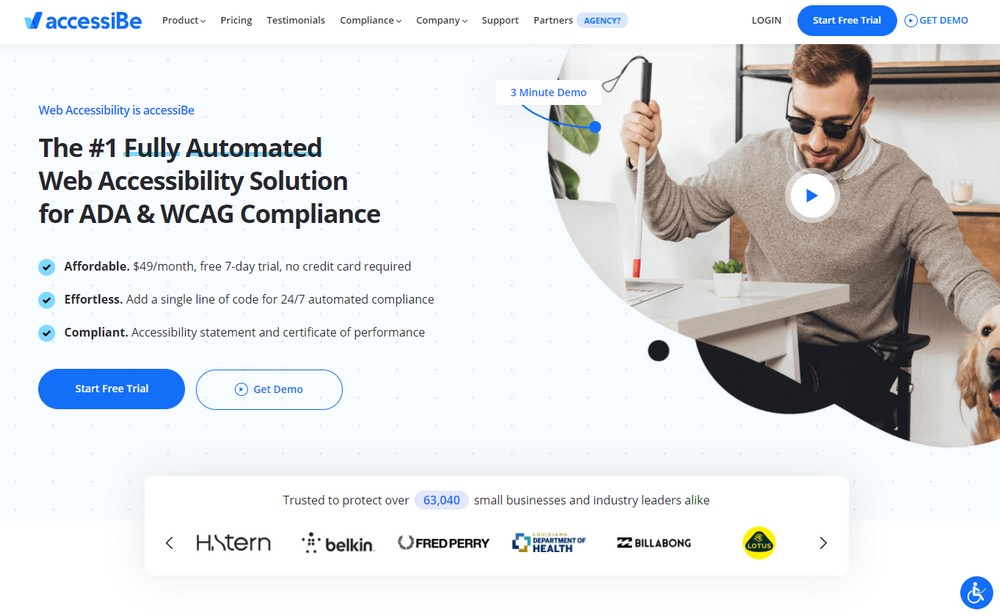What is ADA Compliance? A Complete 101 Intro
Providing a more inclusive and accessible experience to all customers, including to a person with a disability, should be an important focus of every business. Laws like the Americans of Disabilities Act (ADA) were introduced to encourage businesses to make it a reality.
ADA applies to all kinds of businesses and it now includes websites as well. After all, most of our everyday shopping and activities happen online. It only makes sense to enable such benefits to a person with a disability.
The first step towards making your business and website ADA compliance is to familiarize yourself with its importance and requirements. The fact that you’re already here reading this article means you are on the right path.
In this intro guide, we explain the importance of the ADA, what kind of rules you need to follow, and how to avoid lawsuits by making your website ADA compliant. Keep reading to learn more.
What Is the Americans with Disabilities Act (ADA)?

The Americans with Disabilities Act (ADA) was first introduced as a law in 1990. Its main purpose was to make government agencies and private businesses more accessible to Americans with a disability as well as their families and caregivers.
This means a business or an agency needs to be designed in a way to make the workplace accessible to an employee with a disability as well as to a customer with a disability.
Since 2017, it was clearly recognized that ADA law is applicable to websites as well. This resulted in a 16% increase in ADA lawsuits targeting websites that failed to meet accessibility standards.
Why ADA Compliance is Important
When it comes to ADA compliance, most businesses are mainly concerned about avoiding lawsuits. Sure, it’s part of what encourages businesses to follow the law in the first place. But, there’s a bigger and better concept behind the law itself.
ADA is all about making the world a better and more accessible place for persons with disabilities. It’s about providing a person with a disability the same benefits and advantages that everyone else has. Simply put, it’s about enabling basic human rights.
This is especially important for websites. During a time like the pandemic, we are encouraged to stay at home, shop online, and work remotely. And it’s your duty as an entity serving the public to make your business accessible to everyone.
Who Should Follow the ADA Rules?
If you have a hotel, spa, restaurant, golf course, medical clinic, or any other agency or business that serves the public, you need to follow the ADA requirements.
This means you need to make your business location and offices accessible to a person with a disability, including both your employees and customers.
There’s a common myth that suggests that the ADA law is only applicable to businesses with 15 employees or more. This is a standard set for making the workplace ADA compliant for employees.
When it comes to websites serving the public, ADA compliance is required to all businesses no matter how big or small.
How ADA Compliance Affects Websites
ADA Title III (Public Accommodations) section now includes websites as part of its law. It requires all business websites to provide accessibility options for a person with a disability.
Whether you have a small online shop or a corporate business website with a target audience from the US, your website needs to be compliant with ADA requirements to avoid potential lawsuits.
For example, you should make sure your website supports screen reader software to make it accessible to a person with a vision disability.
It’s worth noting that if you’re a web designer or a design agency, you should follow the ADA standards to the letter. Not only to protect your clients but also yourself. Because if your client gets served with a lawsuit, you will be partly responsible for it.
Just last week, accessiBe tweeted about how the White House declared to make it’s website inclusive and accessible to everyone.
ADA Compliance Checklist for Websites
To make your website compliant with the ADA, you need to implement a few strategies and technologies with your website. Following the Web Content Accessibility Guidelines (WCAG) is the best way to ensure your website is ADA compliant.
Web Content Accessibility Guidelines (WCAG) consists of four sections that cover perceivable, operable, understandable, and robust elements. Here are just a few of the guidelines you should follow to get started:
- Support for screen reading software and devices
- Include alt-tags for images
- Support text and content resizing
- Include a color-blind mode with color & contrast adjustments
- A consistent and flexible navigation system
- Make website compatible with keyboard navigation
- Seizure-safe mode with the ability to disable animations and bright colors
These are just the basics of WCAG for ADA compliance. There are many other additional areas you need to adjust and improve to make a website fully compliant with the ADA.
How To Make Your Website ADA Compliant
For a long time, the only way for making a website accessible and compliant with the law was to hire an agency that specializes in web accessibility. They take charge of optimizing website code and implement systems to make the content compliant with the WCAG.
In return, the agencies charge from $5000 to $50,000 per year. As you can imagine, it’s not a price small businesses could afford.
Thankfully, advancements in AI technology have made it possible to easily make any website compliant with WCAG and the ADA standards without any outside help at a very affordable price.
accessiBe is a great example of a solution that allows you to implement a WCAG-compliant accessibility system by simply copy-pasting a line of code. If you have a WordPress website, it can be done by installing a plugin.

Once enabled, the platform adds an Accessibility Adjustments system to your website where users can easily adjust your website content and design to their preference, like resizing text, adjusting colors, ADHD adjustments, with just a few clicks.
Solutions like this make it possible for businesses of all sizes to make more accessible websites for everyone.
In Conclusion
Even though making your website accessible is required by law, you should think about doing it for the benefit of your audience and customers. With today’s technology and tools, it’s quite easy to accomplish and affordable as well.
Looking for WordPress hosting? We use Kinsta. They offer world-class WordPress hosting, built to keep your website fast, secure, and always online.
